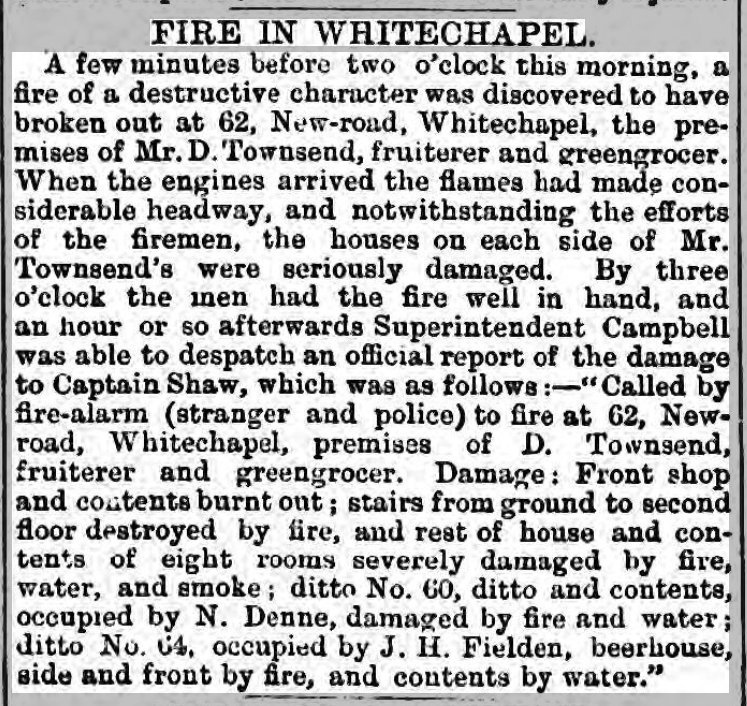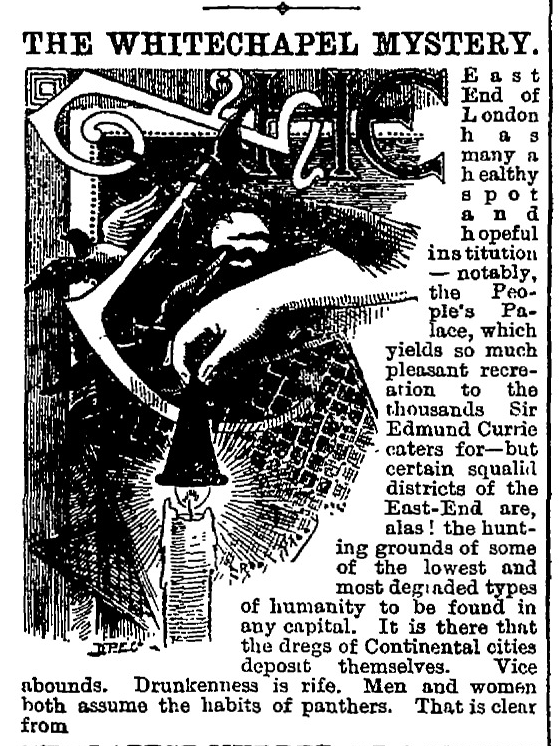← Back to blogs
Whitechapel and the Project
Amy Milne-Smith - August 1, 2017
The digitization of newspapers makes this project possible, and the excellent work of my webmaster and geography student translated the data onto a map. But the coding and data mining are not the full story here. This is a digital humanities project, but there is still a fair amount of traditional historical research at play.
The most challenging part for the research team was determining how a neighborhood was represented in various articles. The first conversations I had early on in the project with Darren Leung and Ryan Orr were about how to characterize various articles. The first idea of the project only imagined positive and negative representations. It soon became clear there was a need for a neutral category as well; to truly understand what people associated with Whitechapel meant capturing the full range of possibilities. Some articles detailed tragic and negative events—however, the neighborhood itself was not represented in a negative light. For example:

“Fire in Whitechapel,” Globe, 23 November 1886, 2.
The fire was a tragic event, but it was presented as in no way a reflection of the neighborhood, or faulty building codes, or disreputable landlords or lazy tenants. Such stories were neutral.
In other cases, a more complex reading was necessary. Many longer pieces that paint a descriptive picture of Whitechapel included both positive and negative attributes. For example, in “The Whitechapel Mystery.”

“The Whitechapel Mystery,” Penny Illustrated Paper, 8 September 1888, 151.
The article begins quite positively. A quick glace of the introduction points out the “healthy spot” and highlights a specific “hopeful institution” with its offerings of “pleasant recreation.” However, the article soon takes a turn. In spite of such things, the author is compelled to relate that Whitechapel is also the refuge of “degraded humanity,” “vice,” and “drunkenness.” The refuse of the Continent inhabits the dark corners of London’s metropolis. In its most poetic, if somewhat abstract metaphor, the author believes that in Whitechapel “Men and women both assume the habits of panthers.”
This is clearly a negative portrayal of the neighborhood and the positive framing only reinforces the negative details to come; there is no balance here.
There may come a day when OCR recognition can be paired with analytic reading programmes to analyze the nuance of text. For now, it still takes a fair amount of labour to sift through these articles. However, the time saved in being able to quickly find such a large collection of press clippings is still invaluable.
- 1 “‘Jack the Ripper’ and the Rochford Murder,” Dundee Evening Telegraph (12 August 1893) p. 2; also found in Sheffield Evening Telegraph (11 August 1893), Daily Gazette for Middlesbrough (14 August 1893), Shields Daily Gazette (14 August 1893).
- 2 “The Rochford Murder,” East Anglian Daily Times (27 May 1893) p. 5; “Mysterious Murder of a Widow,” Reynolds’s Newspaper (28 May 1893) p. 4.
- 3 “The Rochford Murder,” Globe (25 July 1893) p. 7; “Bill Thrown Out,” Essex Herald (25 July 1893) p. 5.
- 4 “Another Essex Mystery,” Globe (3 June 1893) p. 2.
- 5 “Is Jack the Ripper About Again?” Aberdeen Evening Express (12 August 1893) p. 2; also found in the Glasgow Evening Post (11 August 1893), Aberdeen Press and Journal (14 August 1893), and under “A Jack the Ripper Scare” in Newry Reporter (15 August 1893).
- 6 “Jack the Ripper and Recent Murders,” Gloucestershire Echo (12 August 1893) p. 4.
- 7 “Is Jack the Ripper About Again?” Sheffield Evening Telegraph (11 August 1893) p. 3; also found with a few extra details under the same title in Shields Daily Gazette (14 August 1893), Daily Gazette for Middlesbrough (14 August 1893), and under “‘Jack the Ripper’ and the Rochford Murder” in Dundee Evening Telegraph (12 August 1893).
- 8 “The Rotherhithe Murder,” Illustrated Police News (8 July 1893) p. 2.
- 9 “The Rotherhithe Murder,” South London Press (12 August 1893) p. 5.